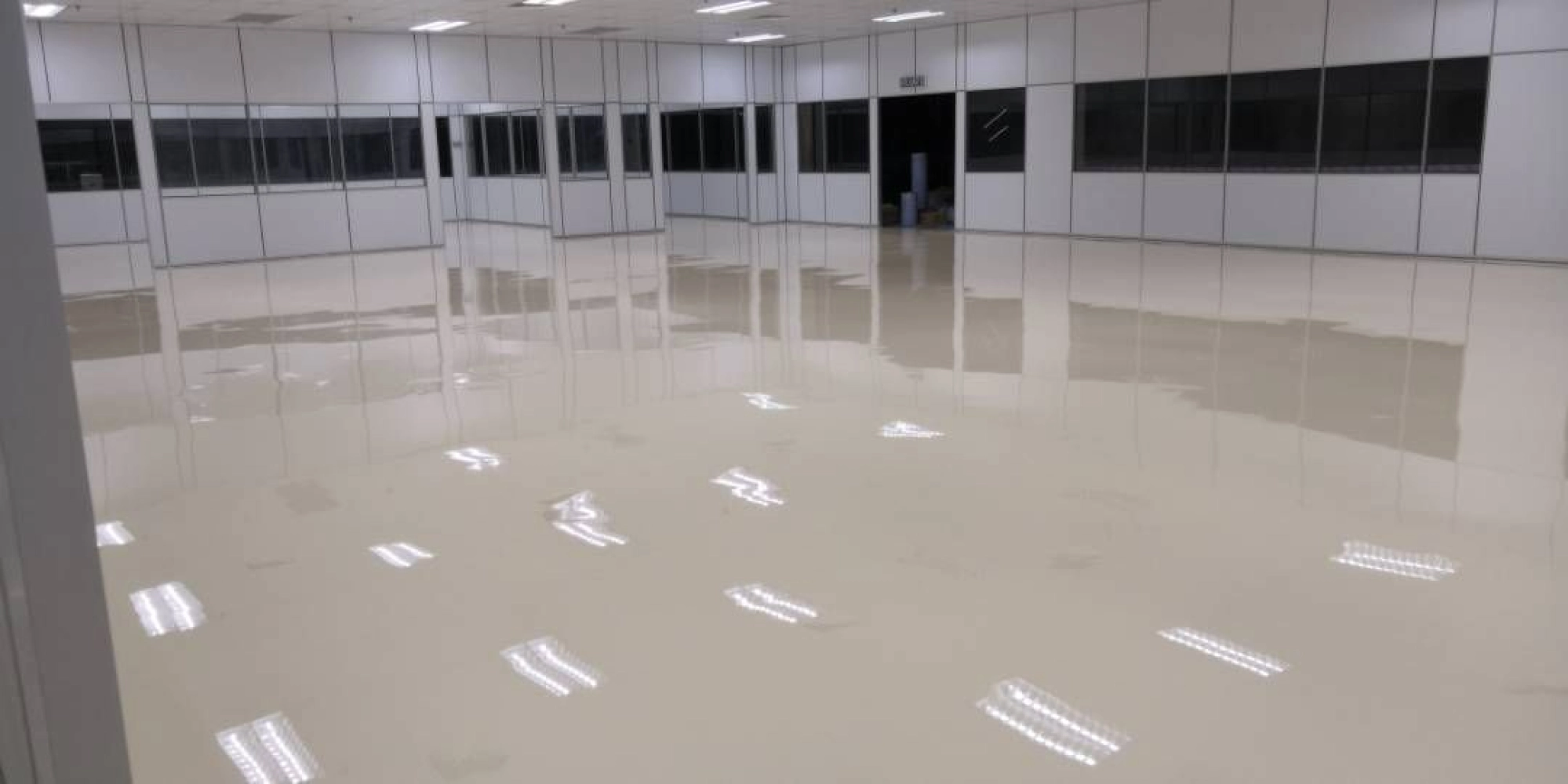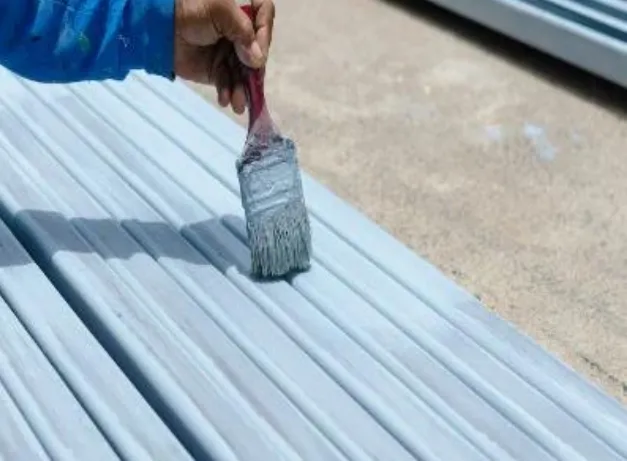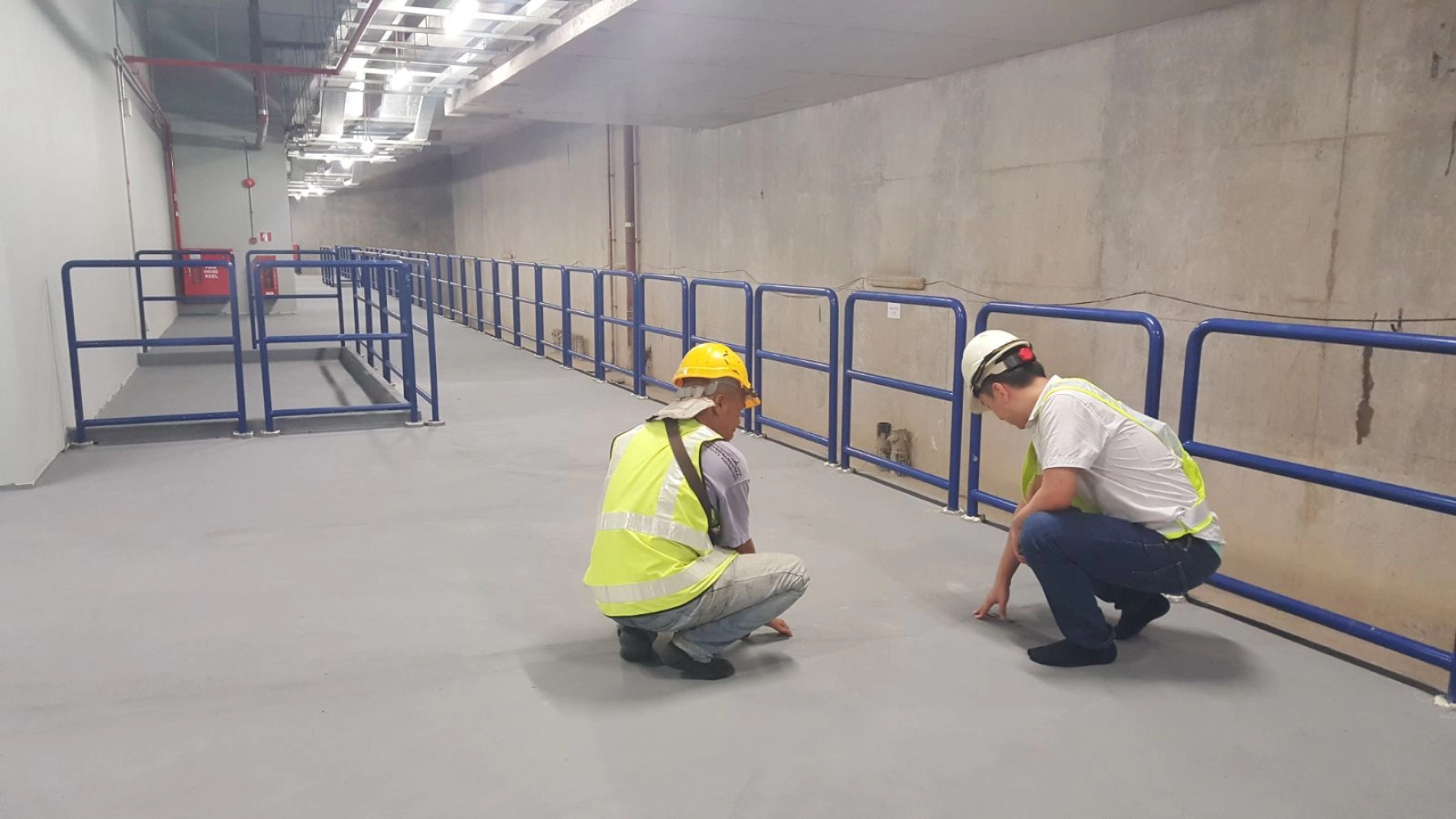Coal Tar Epoxy – The Black Magic
Dubbed as “That Old Black Magic” by B. Wood in the Journal of Protective Coatings and Linings, coal tar epoxy is a combination of epoxy resins and coal tar. It is made of refined coal tar and blended together with the polyamide converted epoxy. Coal tar epoxy coating systems are commonly used for steel and concrete protection under immersed and atmospheric conditions, mostly as a layer of moisture protection for offshore and underground systems such as clarifiers, tanks, water treatment facilities and pipelines. It also has excellent properties towards fresh and saltwater including highly resistant to cathodic disbondment.
Dri-Gard SW 100 is a high performance, chemical resistant coal tar epoxy system.
Features of Coal Tar Epoxy
Let us take a look at the features of coal tar epoxy!
- It usually has a high film build and is heavy duty.
- It provides excellent protection for metal surfaces such as iron, steel, and concrete.
- It prevents rust and corrosion resistance.
- It provides maximum protection towards soil stress.
- It can withstand in saltwater immersion, that is suitable for many marine environments.
- It protects concrete against sulphate attack of wastewater.
- It is suitable for permanently immersed or buried structures.
- It has high electrolyte resistance, low water vapour permeability and good antibacterial properties – making it a suitable choice for sewage treatment.
Applications of Coal Tar Epoxy
- Coal tar epoxy has many features and benefits, allowing it to be used in various industries, including sewage and wastewater treatment, offshore structures, steel pipelines, manholes, ballast tanks, clarifiers, and so on.
.png)
Various applications of coal tar epoxy
Alternative Solutions to Coal Tar Epoxy
Due to environmental issues, certain countries or owners have started replacing coal tar epoxy with other types of modified epoxy. Urgent formulated tar-free epoxy is required for corrosion protection in some industries to comply with international standards. According to a study conducted by Jagtap et al., 2014, there are four different types of coal tar free formulation that can be the replacement for the coal tar epoxy using different approaches which are listed as follow:
| Composition | Description of the resin and pigment-extender | Approaches |
| CTE | Coal tar-epoxy-PAD/steatite | – |
| 1 | Epoxy-BIT-PAD/steatite | Bitumen |
| 2 | Epoxy-HR-PAD/TiO2, steatite and baryte | Hydrocarbon resin |
| 3 | Epoxy-HR-FL-PAD/TiO2, steatite and barytes | Hydrocarbon resin & flexibilizer |
| 4 | Epoxy-HR-FL-PAD-PAM/TiO2, steatite and barytes | Polyamide and polyamine curing agent |
Coal tar epoxy and their replacement and different type of approaches
Abbreviation: CTE- coal tar epoxy, PAD – polyamide with amine hydrogen, PAM – polyamine with amine hydrogen, HR – hydrocarbon resin with hydroxyl, FL – flexibilizer
Out of these four formations, composition-4 may offer as the alternative to coal tar epoxy-based coatings as it has good mechanical and corrosion resistance properties.
Comparison between CTE & other Tar-Free Epoxy Systems
| Coal Tar Epoxy Coating | Fusion-Bonded Epoxy (Powder Coating) |
Tar-Free Epoxy Coating | |
| Description | A black surface protection polymer used on surfaces that is expose to extreme corrosive environments. It is a blend of various epoxy resins and coal tar that required curing agent such as amines and polyamides. | A type of epoxy-based that was applied as standalone coating system or as multi-layer for polyolefin-coated pipelines. Normally, for the application, it required pre-heating the substrate to a required temperature, then subsequently powder coating was applied | It comprises of 2 components; Component A is epoxy liquid phenolic resin whereas component B is polyamide resin as curing agent. Polyamide cured resin-based coating was invented to have light colour, antirust properties, and good waterproof. |
| Advantages | – Excellent resistance towards fresh & saltwater – Excellent resistance to cathodic disbondment – Cheap |
– Superior physical & chemical stability – Resistant to soil stress & impact damage – Resistant to cathodic disbondment |
– Excellent adhesion to concrete & steel substrates – Cost effective – does not require primer – High chemical & corrosion resistance – Does not support bacterial growth – Resistant to abrasion |
| Disadvantages /Limitations | – Carcinogenic & toxic – Not suitable for potable water – Difficult to recoat – Fair solvent resistance – Chalking under UV exposure |
– High moisture absorption & permeation – May undergo degradation on long term exposure to sunlight – High start-up costs |
– High viscosity – Slower cure compared to powder coating – Temperature dependent – Yellowing/Chalking under UV exposure |
| Application | – Wastewater & sewage treatment – Secondary containment – Pipe coating – Offshore rigs – Chemical plants – Non-potable water tanks |
– Pipelines & wide range of piping bonds – Steel structures in coastal areas |
– Water & wastewater treatment – Ballast tank – Crude oil tanks – Sewage treatment plants – Manholes – Offshore structures – Bridges – Power plants – Storage tanks |
| Dritech Product | Dri-Gard SW 100 / SW 105 / SW 180 | – | Dri-Gard TF 320 |
Comparison chart between CTE, Fusion Bonded Epoxy & Tar-Free Epoxy Coating
Solutions by Dritech
- In Dritech Chemicals, we have developed a solvent-free and tar-free epoxy protective coating – DRI-GARD TF 320, that is able to achieve similar performance as common coal-tar epoxy (DRI-GARD SW Series) and it can be applied in both and dry conditions. The application of DRI-GARD TF 320 also does not require any primers and may be applied up to 250 microns in one coat! Click DRI-GARD TF 320 to know more about the product.
| Coal Tar Epoxy (Dri-Gard SW series) |
Tar-Free Epoxy (Dri-Gard TF 320) |
|
| Tar-free | X | / |
| Non-toxic & safe | X | / |
| Chemical resistance | Mid | High |
| Adhesion on steel | / | / |
| Adhesion on concrete | / | / |
| Ease of application | / | / |
| Self-priming | X | / |
| Application on wet & dry conditions | X (Only dry conditions) |
/ |
.jpg)
Please contact us for more information on appropriate protective coating systems for your structures.
by Nurul Husna Mohd Yusoff
[11 November, 2021]
15 Dec 2022












